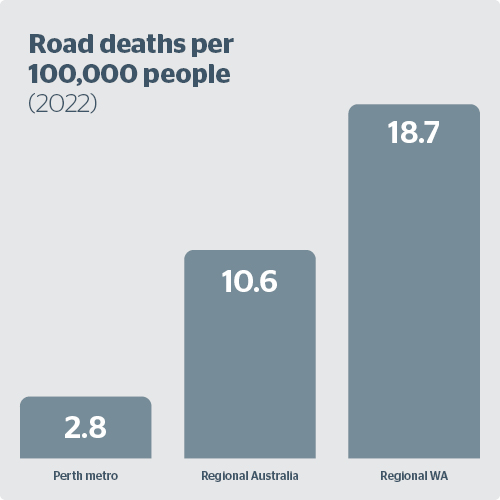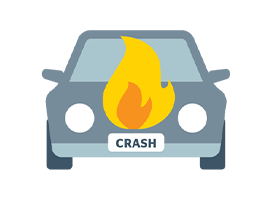Safer roads
Ensuring our roads are forgiving for all users
With urgent State and Federal Government action we can prevent more than 2,100 serious crashes from occurring in regional communities. Saving thousands of people from death and serious injury.
In the five years to 2021, more than 500 people have been killed and 2,900 seriously injured of WA’s regional roads – a devastating reality for our regional communities and the equivalent of wiping out the entire population of a small town.
Shockingly, deaths on regional roads occur at four times the national average.

Around 60 per cent of all serious crashes in regional WA involve cars running off the road or drifting into the path of oncoming traffic - deaths and serious injuries that could be avoided with low-cost road upgrades.
RAC is calling on the State and Federal Governments to fully fund a Regional Road Safety Program, which would see crucial upgrades across WA's regional road network:



Low-cost safety treatments are cost-effective road upgrades which can significantly reduce the risk and severity of a crash. The treatments this program would fund include:
Audible Line Markings:
Also known as rumble strips, Audible Tactile Line Marketing (ATLM) are narrow lines of raised or grooved material along the edge or in the centre of a road, designed to alert the driver when they're drifting out of their lane or into oncoming traffic. The sound and vibration of a tyre passing over these lines allows the driver to correct their path, reducing the likelihood of a crash.
Sealed Road Shoulders:
Sealed road shoulders refer to the asphalted or sealed strips at the edge of a road, outside of the white lines that mark a traffic lane. Unsealed road shoulders are usually gravel or grass and make it difficult to steer and brake at high speed, increasing the chances of a crash.